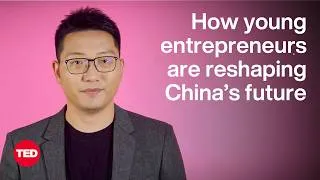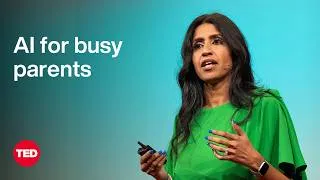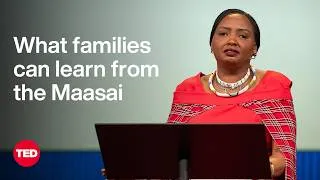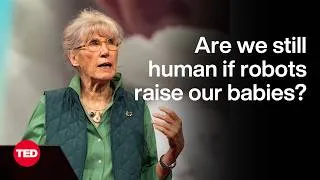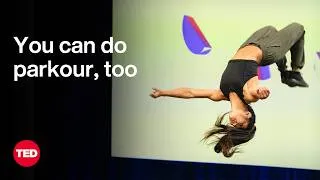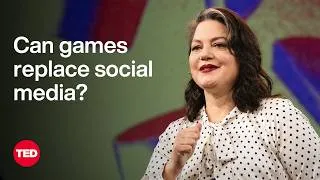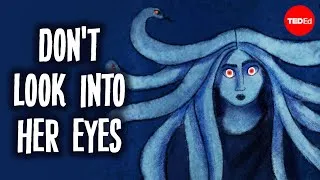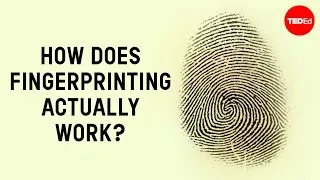How young blood might help reverse aging. Yes, really | Tony Wyss-Coray
275,920 views ・ 2015-09-11
请双击下面的英文字幕来播放视频。
翻译人员: Tian Ye
校对人员: Yolanda Zhang
00:13
This is a painting from the 16th century
from Lucas Cranach the Elder.
0
13134
4659
这是一幅16世纪的画作,
作者是老卢卡斯•克拉纳赫,
00:18
It shows the famous Fountain of Youth.
1
18160
2766
描绘的是著名的青春之泉。
00:21
If you drink its water or you bathe in it,
you will get health and youth.
2
21308
5726
如果你喝下泉水或者在里面洗澡,
你就会变得健康又年轻。
00:27
Every culture, every civilization
has dreamed of finding eternal youth.
3
27857
5549
每一种文化,每一个文明,
都梦想着找到永恒的青春。
00:34
There are people like Alexander the Great
or Ponce De León, the explorer,
4
34044
4752
于是就有了这样的人,
比如亚历山大大帝和探险家庞塞•德莱昂,
00:38
who spent much of their life
chasing the Fountain of Youth.
5
38820
3431
他们花费了一生中的许多时间
来寻找青春之泉,
00:42
They didn't find it.
6
42726
1168
但是没有找到。
00:45
But what if there was something to it?
7
45450
2600
可是,如果真的有呢?
00:48
What if there was something
to this Fountain of Youth?
8
48074
2699
如果真的有这种青春之泉呢?
00:51
I will share an absolutely amazing
development in aging research
9
51284
5178
接下来我将与大家分享有关
衰老的研究领域的非凡进展,
00:56
that could revolutionize
the way we think about aging
10
56486
3610
我们现在对衰老的看法,
01:00
and how we may treat age-related
diseases in the future.
11
60120
3202
以及未来我们如何治疗与衰老有关的疾病,
都可能因此而出现革命性的变化。
01:04
It started with experiments that showed,
12
64145
2509
首先,实验表明——
01:06
in a recent number
of studies about growing,
13
66678
3294
这些是大量近期的有关生长的研究——
01:09
that animals -- old mice --
that share a blood supply with young mice
14
69996
6001
动物——老年老鼠——
与年轻老鼠的血液相通时,
01:16
can get rejuvenated.
15
76021
1604
会变得年轻。
01:18
This is similar to what you might see
in humans, in Siamese twins,
16
78148
4609
在人类身上,比如连体双胞胎中,
也可以看到相似的结果。
01:22
and I know this sounds a bit creepy.
17
82781
2088
当然我知道听起来有点吓人,
01:25
But what Tom Rando, a stem-cell
researcher, reported in 2007,
18
85338
5947
但是,干细胞研究者汤姆•兰道
在2007年发表的报告表明,
01:31
was that old muscle from a mouse
can be rejuvenated
19
91309
3500
老鼠身上的陈年肌肉可以变得年轻,
01:34
if it's exposed to young blood
through common circulation.
20
94833
4629
只要将其置于年轻血液之中,
仅仅通过普通的血液循环即可实现。
01:39
This was reproduced by Amy Wagers
at Harvard a few years later,
21
99903
4643
几年之后,哈佛大学的艾米•魏杰斯
成功重现了这一实验结果,
01:44
and others then showed that similar
rejuvenating effects could be observed
22
104570
4595
而其他人的实验表明,
01:49
in the pancreas, the liver and the heart.
23
109189
2786
在胰、肝和心脏
也可以观察到类似的年轻化效果。
01:52
But what I'm most excited about,
and several other labs as well,
24
112974
4097
但最让我,还有其它几个实验室
感到兴奋的地方在于,
01:57
is that this may even apply to the brain.
25
117095
2419
这一效果甚至可能应用于大脑。
02:00
So, what we found is that an old mouse
exposed to a young environment
26
120715
5331
因此,我们发现,
将老年老鼠置于年轻环境之中,
02:06
in this model called parabiosis,
27
126070
3013
这一模型被称为连体共生,
02:09
shows a younger brain --
28
129107
1792
它的大脑变得年轻了——
02:10
and a brain that functions better.
29
130923
2182
功能也变得更好。
02:13
And I repeat:
30
133966
1590
我再重复一遍:
02:15
an old mouse that gets young blood
through shared circulation
31
135580
6213
一只老年老鼠,
通过共通的血液循环得到年轻血液,
02:21
looks younger and functions
younger in its brain.
32
141817
2984
其大脑显得更加年轻,
功能也更年轻化。
02:25
So when we get older --
33
145998
1532
当我们逐渐变老时——
02:27
we can look at different aspects
of human cognition,
34
147554
2672
我们可以看看人类认知能力的
不同方面,
02:30
and you can see on this slide here,
35
150250
1753
从这张幻灯片上,
大家可以看到推理、语言能力等等。
02:32
we can look at reasoning,
verbal ability and so forth.
36
152027
3383
02:35
And up to around age 50 or 60,
these functions are all intact,
37
155899
5279
一直到大约50或60岁,
这些功能都没有受损,
02:41
and as I look at the young audience
here in the room, we're all still fine.
38
161202
4482
我看了下坐在这里的年轻观众,
大家都没有问题。
02:45
(Laughter)
39
165708
1008
(笑声)
02:46
But it's scary to see
how all these curves go south.
40
166740
3807
但是看到这些曲线
开始下降还是挺吓人的。
02:50
And as we get older,
41
170571
1589
当我们变老时,
02:52
diseases such as Alzheimer's
and others may develop.
42
172184
4051
会开始出现像阿尔茨海默症(老年痴呆)
这样的疾病。
02:57
We know that with age,
the connections between neurons --
43
177004
3571
我们知道,随着年龄增加,
神经元之间的联系——
03:00
the way neurons talk to each other,
the synapses -- they start to deteriorate;
44
180599
4651
神经元之间进行对话的突触——
开始退化;
03:05
neurons die, the brain starts to shrink,
45
185274
3306
神经元开始衰亡,
大脑逐渐萎缩,
03:08
and there's an increased susceptibility
for these neurodegenerative diseases.
46
188604
3992
人们也就越来越容易患上
这些神经退化疾病。
03:13
One big problem we have -- to try
to understand how this really works
47
193573
4909
我们面临的一大问题是——
想要在分子和功能机制层面上
03:18
at a very molecular mechanistic level --
48
198506
2596
搞清楚这个过程是如何发生的——
03:21
is that we can't study the brains
in detail, in living people.
49
201126
4050
但我们还无法研究
活体人类大脑活动的细节问题。
03:26
We can do cognitive tests,
we can do imaging --
50
206033
2986
我们可以进行认知测试,
可以做成像——
03:29
all kinds of sophisticated testing.
51
209043
2696
各种复杂测试。
03:31
But we usually have to wait
until the person dies
52
211763
3618
但通常我们得等到人死亡之后,
03:35
to get the brain and look at how it really
changed through age or in a disease.
53
215405
5094
才能看到大脑,才能了解因为年龄或疾病,
它到底发生了什么变化。
03:40
This is what neuropathologists
do, for example.
54
220888
3064
这就是神经病理学家的工作。
03:44
So, how about we think of the brain
as being part of the larger organism.
55
224333
5667
那么,我们不妨把大脑当做
有机体的一部分。
我们是否可能有更深入的了解,
03:50
Could we potentially understand more
56
230024
2477
03:52
about what happens in the brain
at the molecular level
57
232525
2929
从分子层面了解,
大脑内部是怎样运转的,
03:55
if we see the brain
as part of the entire body?
58
235478
3586
如果我们把大脑看作整个身体的一部分?
03:59
So if the body ages or gets sick,
does that affect the brain?
59
239088
4877
那么如果身体变老或生病了,
会影响到大脑吗?
04:03
And vice versa: as the brain gets older,
does that influence the rest of the body?
60
243989
4423
而且反过来:如果大脑变老了,
会影响到身体其它部分吗?
04:09
And what connects all the different
tissues in the body
61
249050
3491
而将身体各个不同组织联系到一起的就是:
04:12
is blood.
62
252565
1150
血液。
04:14
Blood is the tissue that not only carries
cells that transport oxygen, for example,
63
254366
5825
血液是一种组织,
它不只含有携带氧气的细胞,
04:20
the red blood cells,
64
260215
1241
比如说,红细胞,
04:21
or fights infectious diseases,
65
261480
2200
或对抗感染性疾病的细胞,
04:23
but it also carries messenger molecules,
66
263704
4271
它还含有信使分子,
04:27
hormone-like factors
that transport information
67
267999
3912
这些类激素的因子,
能够在细胞之间传递信息,
04:31
from one cell to another,
from one tissue to another,
68
271935
4133
还能在身体组织之间传递信息,
04:36
including the brain.
69
276092
1457
其中也包括大脑。
04:37
So if we look at how the blood
changes in disease or age,
70
277573
5138
那么如果我们看到了血液
因为疾病或年龄而发生了怎样的变化,
04:42
can we learn something about the brain?
71
282735
2363
我们是否也可以以此来
获得大脑的信息呢?
04:45
We know that as we get older,
the blood changes as well,
72
285651
4836
我们知道,随着我们逐渐变老,
血液也在同样变化,
04:50
so these hormone-like factors
change as we get older.
73
290511
2959
所以这类激素因子
也随着变老而变化。
04:53
And by and large,
factors that we know are required
74
293494
4199
从总体上来说,这些因子,
04:57
for the development of tissues,
for the maintenance of tissues --
75
297717
3421
我们已知是组织发育所需的,
维持其功能的因子——
05:01
they start to decrease as we get older,
76
301162
2877
随着我们变老,它们开始变少,
05:04
while factors involved in repair,
in injury and in inflammation --
77
304063
4703
而与修复、伤害和炎症有关的
那些因子——
05:08
they increase as we get older.
78
308790
1950
它们随着身体的衰老却在增加。
05:10
So there's this unbalance of good
and bad factors, if you will.
79
310764
5042
所以存在着这种好坏因素不平衡的局面。
05:16
And to illustrate what we can do
potentially with that,
80
316988
2993
关于针对这种情况我们能做些什么,
我想说一说我们所做的一个实验。
05:20
I want to talk you through
an experiment that we did.
81
320005
2652
05:22
We had almost 300 blood samples
from healthy human beings
82
322681
3649
我们有近300份健康人类的血液样本,
05:26
20 to 89 years of age,
83
326354
2517
年龄范围在20-89岁,
05:28
and we measured over 100
of these communication factors,
84
328895
3895
我们测量了超过100种的这些通信因子,
05:32
these hormone-like proteins that
transport information between tissues.
85
332814
4094
这些可以在组织间
传递信息的激素样蛋白质。
05:37
And what we noticed first
86
337266
1676
我们首先注意到的是,
05:38
is that between the youngest
and the oldest group,
87
338966
2817
将最年轻和最老的组相比,
05:41
about half the factors
changed significantly.
88
341807
3297
这些因子中有大约一半存在显著变化。
05:45
So our body lives in a very
different environment as we get older,
89
345128
3135
所以,随着我们变老,
我们身体所处的环境也发生了极大的改变,
05:48
when it comes to these factors.
90
348287
1751
从这些因子的角度来说。
05:50
And using statistical
or bioinformatics programs,
91
350062
3496
使用统计和生物信息程序分析后,
05:53
we could try to discover
those factors that best predict age --
92
353582
4694
我们想找出对预测年龄
最有效的那些因子——
05:58
in a way, back-calculate
the relative age of a person.
93
358300
3643
想用这种方法来反推一个人的相对年龄。
06:02
And the way this looks
is shown in this graph.
94
362337
2856
这张图中显示的就是这个方法。
06:05
So, on the one axis you see
the actual age a person lived,
95
365618
5369
可以看到一条轴表示的是一个人的年龄,
实际实龄,
06:11
the chronological age.
96
371011
1305
06:12
So, how many years they lived.
97
372340
1722
也就是生活了多少年。
06:14
And then we take these top factors
that I showed you,
98
374086
2708
然后我们选取了
给大家展示过的这些主要因子,
06:16
and we calculate their relative age,
their biological age.
99
376818
4844
来计算他们的相对年龄,
生理年龄。
06:22
And what you see is that
there is a pretty good correlation,
100
382708
3634
大家可以看到,其中有明显的相关性,
06:26
so we can pretty well predict
the relative age of a person.
101
386366
3315
所以我们可以相当准确地
预测一个人的相对年龄。
06:29
But what's really exciting
are the outliers,
102
389705
3915
但真正令人激动的是
这些规律之外的数据点,
06:33
as they so often are in life.
103
393644
1804
它们在生命进程中是很常见的。
06:35
You can see here, the person
I highlighted with the green dot
104
395922
4568
可以看这儿,我用绿点标出的这个人
06:40
is about 70 years of age
105
400514
2596
大约70岁,
06:43
but seems to have a biological age,
if what we're doing here is really true,
106
403134
5006
但看来他的生理年龄,
如果我们得到的结果非常可靠的话,
06:48
of only about 45.
107
408164
2043
才45岁。
06:50
So is this a person that actually
looks much younger than their age?
108
410231
3484
那么这个人真的是看起来
比实际年龄年轻不少吗?
06:54
But more importantly: Is this a person
who is maybe at a reduced risk
109
414183
4516
但更为重要的问题是:
06:58
to develop an age-related disease
and will have a long life --
110
418723
3324
这个人出现与衰老相关的疾病的
风险是否会更低——
07:02
will live to 100 or more?
111
422071
1495
他会活过100岁,甚至更长寿吗?
07:04
On the other hand, the person here,
highlighted with the red dot,
112
424402
4561
另一个例子,这个以红点标出的人,
07:08
is not even 40,
but has a biological age of 65.
113
428987
4906
还没到40岁,
但是生理年龄为65岁。
07:13
Is this a person at an increased risk
of developing an age-related disease?
114
433917
4398
这个人出现与衰老相关的疾病的
风险是否会更高?
07:18
So in our lab, we're trying
to understand these factors better,
115
438339
3656
所以我们在实验中努力地去
更充分地了解这些因子,
07:22
and many other groups
are trying to understand,
116
442019
2238
还有许多其它团队也在努力去了解,
07:24
what are the true aging factors,
117
444281
2076
哪些才是真正的衰老因子,
07:26
and can we learn something about them
to possibly predict age-related diseases?
118
446381
4973
我们是否可以从中发现某些信息,
从而有可能预测衰老相关的疾病?
07:32
So what I've shown you so far
is simply correlational, right?
119
452281
4062
所以到现在我所展示的这些
完全是相关联的,对吧?
07:36
You can just say,
"Well, these factors change with age,"
120
456367
4031
有人就会说:
“这些因子的确会随年龄变化,”
07:40
but you don't really know
if they do something about aging.
121
460422
3655
但你并不知道
它们是否会影响衰老过程。
07:45
So what I'm going to show you now
is very remarkable
122
465031
3048
那么,我即将展示的内容
会非常不同寻常,
07:48
and it suggests that these factors
can actually modulate the age of a tissue.
123
468103
5071
它表明这些因子实际上
可以调节组织的年龄。
07:53
And that's where we come back
to this model called parabiosis.
124
473845
3298
这就回到了这个模型,
它叫做连体共生。
07:57
So, parabiosis is done in mice
125
477167
2540
我们已经实现了老鼠的连体共生,
07:59
by surgically connecting
the two mice together,
126
479731
4912
就是通过手术将两只老鼠
进行生理上的连通,
08:04
and that leads then
to a shared blood system,
127
484667
2333
使它们的血液循环互通,
08:07
where we can now ask,
"How does the old brain get influenced
128
487024
4787
这样我们就可以问,
“将老年大脑置于年轻血液之中,
08:11
by exposure to the young blood?"
129
491835
1738
它会受到怎样的影响?”
08:14
And for this purpose, we use young mice
130
494144
2204
为了解答这个问题,
08:16
that are an equivalency
of 20-year-old people,
131
496372
3453
我们使用了相当于人类20岁的年轻老鼠,
08:19
and old mice that are roughly
65 years old in human years.
132
499849
4336
和大约相当于人类65岁的老年老鼠。
08:24
What we found is quite remarkable.
133
504958
2826
我们的发现相当令人吃惊。
08:27
We find there are more neural stem cells
that make new neurons
134
507808
3720
我们发现了更多的神经干细胞,
08:31
in these old brains.
135
511552
1332
在老年大脑中产生了新的神经元。
08:33
There's an increased
activity of the synapses,
136
513351
2582
突触的活动也增加了,
08:35
the connections between neurons.
137
515957
2039
神经元通过突触相互联系。
也有了更多的基因表达,
08:38
There are more genes expressed
that are known to be involved
138
518020
3285
08:41
in the formation of new memories.
139
521329
1747
我们知道它们与新记忆的形成有关。
08:43
And there's less of this bad inflammation.
140
523659
2508
严重炎症的问题也变少了。
08:47
But we observed that there are no cells
entering the brains of these animals.
141
527427
6496
但我们观察到并没有细胞
进入这些动物的大脑,
08:53
So when we connect them,
142
533947
1386
当我们将两只动物连在一起时,
08:55
there are actually no cells
going into the old brain, in this model.
143
535357
5376
在这个模型中,
实际并没有细胞进入老年大脑。
09:01
Instead, we've reasoned, then,
that it must be the soluble factors,
144
541379
3661
于是,我们推论出,
一定是可溶的因子在作用,
09:05
so we could collect simply the soluble
fraction of blood which is called plasma,
145
545064
4783
所以我们只需采集血液中的可溶部分,
就是血浆,
09:09
and inject either young plasma
or old plasma into these mice,
146
549871
3944
将年轻或年老的血浆注射入这些小鼠,
09:13
and we could reproduce
these rejuvenating effects,
147
553839
2368
我们就可以重现这些年轻化效果,
09:16
but what we could also do now
148
556231
1714
而且我们现在还可以做的是,
09:17
is we could do memory tests with mice.
149
557969
2450
我们可以对小鼠进行记忆测试。
09:20
As mice get older, like us humans,
they have memory problems.
150
560443
3853
小鼠变老时,和人类一样,
会出现记忆问题,
09:24
It's just harder to detect them,
151
564818
1593
只是很难检验出来,
09:26
but I'll show you in a minute
how we do that.
152
566435
2344
不过我稍后会展示我们是怎么做的。
09:28
But we wanted to take this
one step further,
153
568803
2695
我们希望能够再前进一步,
09:31
one step closer to potentially
being relevant to humans.
154
571522
4040
希望成果能够实质上与人类联系起来,
希望离这一目标更近。
09:35
What I'm showing you now
are unpublished studies,
155
575586
3197
我现在展示的是一些未发表的研究,
09:38
where we used human plasma,
young human plasma,
156
578807
4533
其中我们使用了人类血浆,
年轻人的血浆,
09:43
and as a control, saline,
157
583364
1849
而对照组使用生理盐水,
09:45
and injected it into old mice,
158
585237
1876
然后注射入老年老鼠体内,
09:47
and asked, can we again
rejuvenate these old mice?
159
587137
4852
我们能再次让这些老鼠变年轻吗?
我们能让它们变聪明吗?
09:52
Can we make them smarter?
160
592013
1660
09:54
And to do this, we used a test.
It's called a Barnes maze.
161
594104
3289
为了回答这些问题,
我们进行了巴恩斯迷宫测试。
09:57
This is a big table
that has lots of holes in it,
162
597417
3155
这是一张大桌子,
上面有许多孔,
10:00
and there are guide marks around it,
163
600596
3483
周围是指示标记,
10:04
and there's a bright light,
as on this stage here.
164
604103
2606
有束强光照在桌上,
就像这个舞台一样。
10:06
The mice hate this and they try to escape,
165
606733
3133
老鼠讨厌强光,于是想办法逃走,
10:09
and find the single hole that you see
pointed at with an arrow,
166
609890
4256
然后找到这一个孔,
大家可以看到有个箭头指到这里,
10:14
where a tube is mounted underneath
167
614170
1945
在后面连接有一根管道,
10:16
where they can escape
and feel comfortable in a dark hole.
168
616139
3193
老鼠可以逃进这里,
它们喜欢呆在黑暗的洞里。
10:19
So we teach them, over several days,
169
619977
1802
于是我们花了几天时间训练它们,
10:21
to find this space
on these cues in the space,
170
621803
2903
来根据这片区域里的这些线索,
找到这个地方。
10:24
and you can compare this for humans,
171
624730
2794
大家可以用这个对比人类的行为,
10:27
to finding your car in a parking lot
after a busy day of shopping.
172
627548
4230
就像你从购物中心出来,
想要在停车场里找到自己的车一样。
10:31
(Laughter)
173
631802
1001
(笑声)
10:32
Many of us have probably had
some problems with that.
174
632827
3751
我们中有许多人
很可能在这方面都有些问题。
10:36
So, let's look at an old mouse here.
175
636602
2018
让我们来看一看这只老年老鼠。
10:38
This is an old mouse
that has memory problems,
176
638954
2176
这只老年老鼠有记忆问题,
10:41
as you'll notice in a moment.
177
641154
1689
大家一会儿就能注意到。
10:43
It just looks into every hole,
but it didn't form this spacial map
178
643305
4724
它只是每个孔都看一看,
但无法形成空间地图,
10:48
that would remind it where it was
in the previous trial or the last day.
179
648053
5247
否则它就会知道这个孔之前试过,
或前一天试过。
10:53
In stark contrast, this mouse here
is a sibling of the same age,
180
653873
5467
形成鲜明对比的是这一只老鼠,
它和前一只是同一胎所生,
10:59
but it was treated with young
human plasma for three weeks,
181
659364
5419
但是注射了年轻人类血浆,
11:04
with small injections every three days.
182
664807
2533
每三天进行少量注射,共三个星期。
11:07
And as you noticed, it almost
looks around, "Where am I?" --
183
667741
4223
大家可以注意到,它几乎就是四处看看,
“我在哪儿呢?”——
11:11
and then walks straight
to that hole and escapes.
184
671988
2907
然后直接就奔向那个孔,逃走了。
11:14
So, it could remember where that hole was.
185
674919
2864
所以,它能记住那个孔在哪里。
11:18
So by all means, this old mouse
seems to be rejuvenated --
186
678742
3688
所以可以肯定地说,
这只老年老鼠看来是变年轻了——
11:22
it functions more like a younger mouse.
187
682454
2379
它的身体机能更像年轻老鼠。
11:24
And it also suggests
that there is something
188
684857
2706
而且还表明,
不仅是在年轻老鼠的血浆里,
11:27
not only in young mouse plasma,
but in young human plasma
189
687587
4991
在年轻人类的血浆里,
11:32
that has the capacity
to help this old brain.
190
692602
3660
也有这种能够改善衰老的大脑功能的能力。
11:36
So to summarize,
191
696834
1152
总结一下,
我们发现这只老年老鼠,
准确地说是它的大脑,是可以改变的。
11:38
we find the old mouse, and its brain
in particular, are malleable.
192
698010
4199
11:42
They're not set in stone;
we can actually change them.
193
702233
3451
它并非一成不变,
我们真的可以改变它。
11:45
It can be rejuvenated.
194
705708
1473
它可以变得年轻。
11:47
Young blood factors can reverse aging,
195
707680
2597
年轻血液中的因子可以逆转年龄,
11:50
and what I didn't show you --
196
710301
1712
而我所没有展示的是——
在此模型中,
年轻老鼠实际上也是置于年老环境之中。
11:52
in this model, the young mouse actually
suffers from exposure to the old.
197
712037
5222
11:57
So there are old-blood factors
that can accelerate aging.
198
717283
3380
所以就存在可以加速衰老的
老年血液因子,
12:01
And most importantly,
humans may have similar factors,
199
721725
4317
而最重要的是,
人类可能有同样的因子,
12:06
because we can take young human
blood and have a similar effect.
200
726066
4078
因为我们可以采集年轻人的血液,
观察到类似的效应。
12:10
Old human blood, I didn't show you,
does not have this effect;
201
730592
3556
老年人的血液,我没有展示,
没有这种效应;
12:14
it does not make the mice younger.
202
734172
1762
它无法让老鼠变得年轻。
12:17
So, is this magic transferable to humans?
203
737071
3628
那么,这种神奇效果可以移植到人类身上吗?
12:20
We're running a small
clinical study at Stanford,
204
740723
3629
我们在斯坦福进行了
一个小型的临床研究,
12:24
where we treat Alzheimer's patients
with mild disease
205
744376
3876
我们找到一些病症较轻的
阿尔茨海默症病人,
12:28
with a pint of plasma
from young volunteers, 20-year-olds,
206
748276
6610
为他们输入20岁年轻志愿者的血浆,
12:34
and do this once a week for four weeks,
207
754910
2595
每周一次,每次一品脱(473毫升),
连续四周,
12:37
and then we look
at their brains with imaging.
208
757529
3163
然后我们观察他们的大脑成像。
12:41
We test them cognitively,
209
761050
1844
我们进行认知测试,
12:42
and we ask their caregivers
for daily activities of living.
210
762918
4006
并向护理员了解他们的日常活动,
12:46
What we hope is that there are
some signs of improvement
211
766948
3919
我们希望见到的是,
通过此项治疗能够出现
12:50
from this treatment.
212
770891
1364
某些改善的迹象。
12:52
And if that's the case,
that could give us hope
213
772758
2556
如果真的是这样的话,
我们就看到了希望,
12:55
that what I showed you works in mice
214
775338
2420
我展示给大家的对老鼠进行的研究,
12:57
might also work in humans.
215
777782
1778
对人类也会有效果。
13:00
Now, I don't think we will live forever.
216
780478
2358
我不认为我们可以长生不老,
13:03
But maybe we discovered
217
783955
2337
但也许我们发现了
13:06
that the Fountain of Youth
is actually within us,
218
786316
3087
青春之泉其实就在我们的身体里,
13:09
and it has just dried out.
219
789427
1738
只是干涸了而已。
13:11
And if we can turn it
back on a little bit,
220
791574
2828
如果我们可以让它再涌出一点点,
13:14
maybe we can find the factors
that are mediating these effects,
221
794426
4627
也许我们就可以找到
能减缓这些(衰老)效应的因子,
13:19
we can produce these factors synthetically
222
799077
2587
我们就可以合成这些因子,
13:21
and we can treat diseases of aging,
such as Alzheimer's disease
223
801688
4013
来治疗衰老疾病,
诸如阿尔茨海默症,
13:25
or other dementias.
224
805725
1230
或其它痴呆症。
13:27
Thank you very much.
225
807282
1151
谢谢大家。
13:28
(Applause)
226
808457
3293
(掌声)
New videos
Original video on YouTube.com
关于本网站
这个网站将向你介绍对学习英语有用的YouTube视频。你将看到来自世界各地的一流教师教授的英语课程。双击每个视频页面上显示的英文字幕,即可从那里播放视频。字幕会随着视频的播放而同步滚动。如果你有任何意见或要求,请使用此联系表与我们联系。
